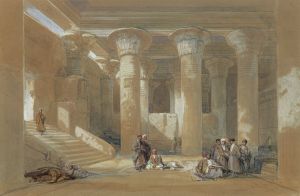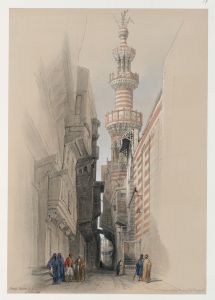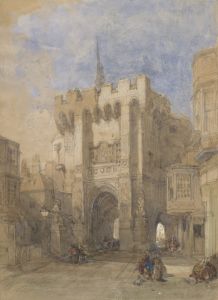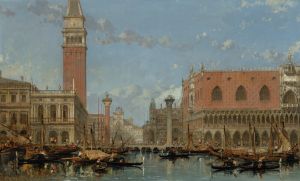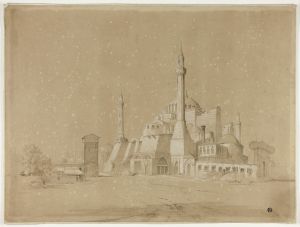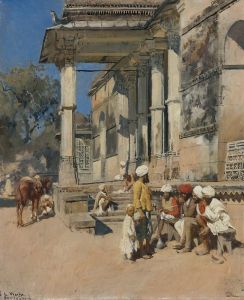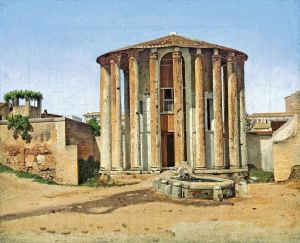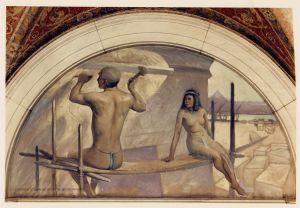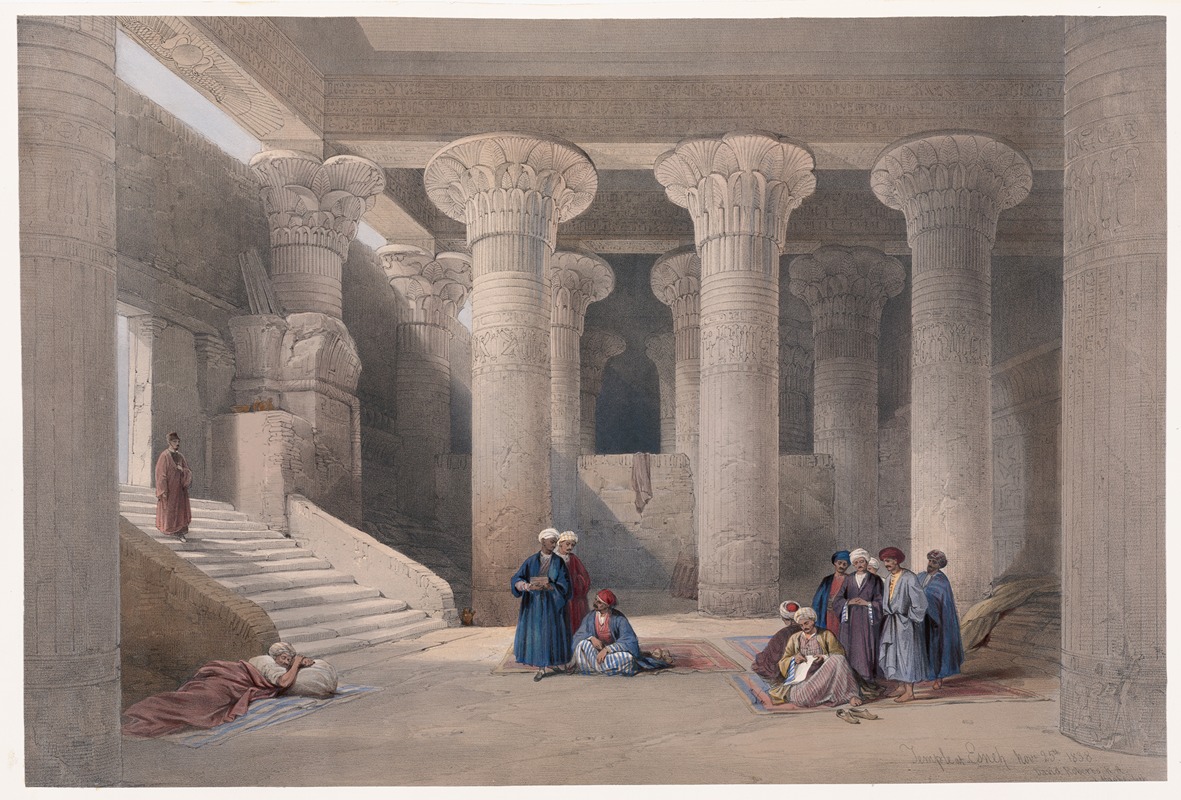
Temple at Esneh [Isnâ]. Nov. 25th, 1838.
A hand-painted replica of David Roberts’s masterpiece Temple at Esneh [Isnâ]. Nov. 25th, 1838., meticulously crafted by professional artists to capture the true essence of the original. Each piece is created with museum-quality canvas and rare mineral pigments, carefully painted by experienced artists with delicate brushstrokes and rich, layered colors to perfectly recreate the texture of the original artwork. Unlike machine-printed reproductions, this hand-painted version brings the painting to life, infused with the artist’s emotions and skill in every stroke. Whether for personal collection or home decoration, it instantly elevates the artistic atmosphere of any space.
"Temple at Esneh [Isnâ]. Nov. 25th, 1838." is a lithograph created by the Scottish artist David Roberts, based on a sketch he made during his travels in Egypt in 1838. David Roberts (1796–1864) was a renowned painter and lithographer, celebrated for his detailed and picturesque depictions of the Middle East and North Africa. His works played a significant role in introducing European audiences to the architectural and cultural heritage of these regions during the 19th century.
The lithograph depicts the Temple of Esna (also spelled Esneh or Isnâ), an ancient Egyptian temple located in the modern-day city of Esna, approximately 55 kilometers south of Luxor. The temple is dedicated to the god Khnum, a deity associated with the creation of life and the inundation of the Nile River. The structure dates primarily to the Greco-Roman period, with much of its surviving architecture constructed during the Ptolemaic and Roman eras. The temple is particularly noted for its well-preserved hypostyle hall, featuring intricately carved columns and detailed inscriptions.
Roberts visited Esna as part of his extensive journey through Egypt and the Holy Land, which he undertook between 1838 and 1839. This expedition resulted in a series of sketches and paintings that were later transformed into lithographs and published in the monumental work The Holy Land, Syria, Idumea, Arabia, Egypt, and Nubia. The publication, produced between 1842 and 1849, included 247 lithographs and was highly influential in shaping Western perceptions of the region.
The lithograph captures the temple's grandeur and its integration into the surrounding environment. Roberts' depiction emphasizes the architectural details of the columns and the interplay of light and shadow, showcasing his skill in rendering both the monumentality and the atmosphere of the site. The date in the title, November 25, 1838, indicates the day Roberts visited and sketched the temple.
David Roberts' works are considered significant not only for their artistic merit but also for their documentary value. His depictions provide a visual record of many historical sites as they appeared in the 19th century, prior to modern restoration efforts and the impact of tourism and urban development. The lithograph of the Temple at Esna remains an important example of his contribution to the study and appreciation of ancient Egyptian architecture.





![Great gateway leading to the Temple of Karnac [Karnak], Thebes. [Title vignette, vol. 2]](/imgs/217399/s/david-roberts-great-gateway-leading-to-the-temple-of-karnac-karnak-thebes-title-vignette-vol-2-29844773.jpg)
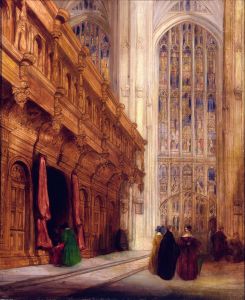
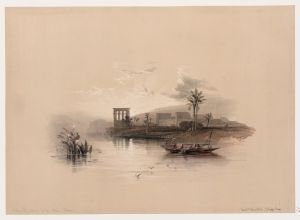
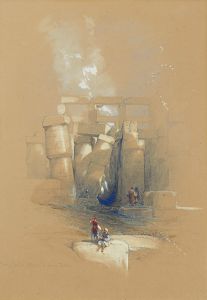

![Pyramids of Geezeh [Giza].](/imgs/217529/s/david-roberts-pyramids-of-geezeh-giza-edcbd9cd.jpg)
